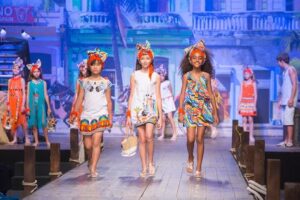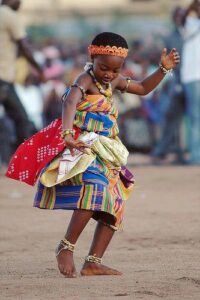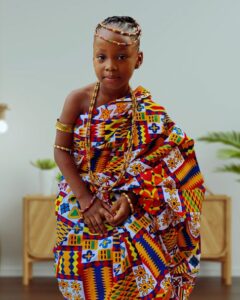Uncategorized
Cultural Influences in Modern Kids’ Fashion
In today’s interconnected world, fashion has become a medium to celebrate cultural diversity and creativity. Kids’ fashion, in particular, is experiencing a vibrant transformation, with influences from different cultures around the globe shaping trends in unique and exciting ways. At Regal XX Hue, we believe that understanding these cultural influences adds depth to fashion and encourages a sense of global appreciation.
This article explores the significant ways cultural influences are redefining modern kids’ fashion, blending tradition with contemporary trends to create styles that are both meaningful and appealing.
1. The Globalization of Kids’ Fashion
Globalization has brought different cultures closer than ever, allowing designers and parents to draw inspiration from diverse traditions. Social media, international travel, and online shopping have introduced global aesthetics into everyday wardrobes.
For instance, African-inspired prints, such as Ankara and Kente, are now commonly seen in children’s outfits worldwide. Similarly, Japanese influences, like kimono-style cardigans and origami-inspired cuts, have gained popularity for their minimalist elegance. This blend of cultural aesthetics allows children to explore a global perspective through fashion, fostering inclusivity and awareness.
2. Reviving Tradition with a Modern Twist

Traditional clothing styles from various cultures are being modernized to suit contemporary lifestyles. These designs retain their cultural essence while being adapted for practicality and comfort in kids’ fashion.
- Indian Fusion Wear: Traditional Indian attire, such as lehengas and kurtas, is being redesigned with lighter fabrics and playful prints, making them suitable for everyday wear.
- African Patterns in Streetwear: Bold geometric patterns and vibrant colors from African textiles are now used in casual kids’ wear, blending traditional aesthetics with urban trends.
- Chinese Cheongsam Dresses: The timeless cheongsam is reimagined with soft pastel shades and modern cuts, making it a popular choice for formal occasions.
These reinterpretations make traditional attire accessible and appealing to younger generations while preserving their cultural heritage.
3. Cultural Icons and Pop Culture in Kids’ Fashion

Cultural icons and pop culture are among the strongest influences in modern kids’ fashion. Television shows, animated movies, and music introduce children to new styles that often carry cultural significance.
- Movies and Animated Series: Films like Moana and Coco have inspired kids’ fashion collections that celebrate Polynesian and Mexican cultures, respectively. These designs often feature patterns, motifs, and colors associated with the cultural settings of the films.
- K-pop and Korean Streetwear: The rise of K-pop has brought Korean streetwear trends to the forefront, including oversized hoodies, bucket hats, and unique layering styles.
- Sports and Global Icons: Jerseys and casual wear inspired by global sporting events or cultural ambassadors also influence what children wear.
Pop culture not only makes fashion exciting for kids but also serves as an entry point for them to learn about different cultures.
4. Festivals and Cultural Celebrations
Cultural festivals play a significant role in shaping kids’ fashion, as parents seek clothing that reflects tradition while being comfortable and fun for children.
- Chinese New Year: Kids’ outfits during this celebration often feature vibrant reds and golds, incorporating traditional symbols like dragons and lotus flowers.
- Diwali and Eid: For these festivals, intricately designed ethnic wear like kurtas, sherwanis, and lehengas are popular choices, often adorned with embroidery and embellishments.
- Western Holidays: Christmas and Halloween inspire themed clothing with motifs such as reindeer, snowflakes, or playful costumes reflecting various characters and cultural icons.
Festive fashion not only brings tradition to life but also creates a sense of joy and belonging for children.
5. Sustainability Rooted in Cultural Practices

Sustainability is becoming a significant focus in modern kids’ fashion, and cultural practices are contributing to this movement. Many traditional methods of crafting garments align with eco-friendly principles.
- Handmade Textiles: Techniques like Indian block printing or Indonesian batik involve handcrafted processes, reducing environmental impact.
- Natural Dyes: Cultures worldwide have used plant-based dyes for centuries, and these methods are now being revived for sustainable kids’ clothing.
- Upcycling and Reuse: African cultures have long embraced the concept of reusing materials to create new garments, a practice that aligns with modern sustainability trends.
By integrating traditional methods with sustainable practices, designers create clothing that respects the environment and celebrates cultural craftsmanship.
6. Cross-Cultural Fusion in Streetwear
Streetwear is one of the fastest-growing segments in kids’ fashion, and it is increasingly incorporating cultural elements. Designers are merging traditional patterns and motifs with urban aesthetics to create unique, modern designs.
- Native American Patterns: Bold geometric prints inspired by Native American designs are appearing in streetwear-inspired jackets and sweatshirts.
- Mexican Ponchos: Ponchos with traditional Mexican patterns are being adapted as stylish outerwear for kids.
- Asian Influences: Streetwear brands are drawing inspiration from Chinese calligraphy and Japanese street culture, featuring bold typography and anime-inspired designs.
This cultural fusion allows children to express individuality while wearing pieces that tell a story.
7. Education and Storytelling Through Fashion
Cultural influences in kids’ fashion go beyond aesthetics. Clothing often carries stories, teaching children about history, geography, and cultural traditions.
- Artisan Collaborations: Designers collaborate with local artisans to incorporate traditional patterns and techniques into their collections, showcasing the craftsmanship of specific regions.
- Educational Prints: Maps, folklore characters, or traditional symbols are featured on clothing, sparking curiosity and learning.
- Empowerment Through Fashion: Wearing culturally inspired outfits helps children connect with their heritage, fostering pride and a sense of identity.
Fashion thus becomes a tool for education, inspiring children to appreciate diversity and history.
8. Challenges and Responsibilities: Avoiding Cultural Appropriation
While cultural influences enrich kids’ fashion, they also come with the responsibility to respect and honor the traditions they draw from. Cultural appropriation remains a concern when designers use elements of a culture without understanding or crediting their significance.
To address this:
- Designers should collaborate with artisans and cultural communities to ensure authenticity.
- Brands must educate consumers about the origin and meaning of the cultural elements used in their designs.
- Parents can make informed choices by supporting ethical brands that prioritize cultural respect and representation.
Respecting cultural roots not only preserves heritage but also promotes a deeper appreciation for global traditions.
9. The Future of Cultural Influences in Kids’ Fashion
As kids’ fashion continues to evolve, the role of cultural influences is expected to grow even further. With advancements in technology, such as AI and 3D printing, designers can experiment with intricate patterns and textures inspired by diverse cultures.
Additionally, collaborations between global and local brands will pave the way for more inclusive and innovative designs. Sustainability will remain a key focus, with traditional techniques playing an integral role in creating eco-friendly fashion for children.
Conclusion
Cultural influences in modern kids’ fashion are a testament to the beauty of diversity and creativity. From traditional attire with modern twists to global streetwear trends, these influences celebrate heritage while embracing innovation. By incorporating cultural elements into their designs, fashion brands create meaningful, stylish clothing that connects children with the world around them.
At Regal XX Hue, we are proud to offer kids’ fashion that reflects this rich cultural tapestry. Explore our collection to find pieces that combine elegance, tradition, and modernity, ensuring your child looks and feels extraordinary.


